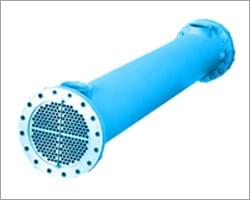Swastik Hydraulic is one of the leading shell and tube heat exchanger manufacturer in Delhi, India and undertaken by employing a few steps. Here's a basic overview about how we manufacture a heat exchanger:
1. We Design: Almost a detailed plan of the construction area of the heat exchanger is required designing before the Water Cooled Heat Exchanger process get started. An index that is made up of specifications like heat transfer figures, fluid properties, pressure ratings, and dimensions.
2. What Material you will use: Material selection is the materials that will meet the service requirements of the installed equipment components, like the shell, tubes, tube sheets, baffles, and header. There are different variety of materials use as commonly such as stainless steel, carbon steel, copper, and alloys.
3. Fabrication of Tubes: Strings are usually made that way and the string is collected in a bundle. As to the case, extrusion and seamless rolling are among the primary techniques that may be used for the production of mostly narrow tubes while welding is the default method for large ones.
4. Tube Sheet Fabrication: The roles of tube sheets are quite similar in tubular exchangers, which are the plates that keep the tubes in the proper position at both ends of the heat exchanger. They normally are shaped out of the same material as the hull in most cases. The tubes are made and installed on the tube sheet. Which will enable perfect coupling for the tubes.
5. Shell Fabrication: The shell can be single out from multiple parts and the welding process based on its size and design appends it. The housing should be sufficiently strong to stand up to the operating loading so that it can remain operational in the required conditions.
6. Assembly: All components are Heat Exchanger Manufacturers independently and, after that, they are gathered together. The task proceeds with installing the tubes into the tube sheet, fastening with baffles to practice better heat transfer, and attachment of headers.
7. Welding Work: The task of welding is joining components into unities. Skilled welder ensuring efficient welding in constructions of strong joints and leaks without cause.
8. Testing Process: Countless tests, including quality and efficiency trade-offs, are conducted to guarantee the quality and performance of the heat exchanger. These can be to check for leaks, perform static test under pre-operational conditions, dynamic test with TLV and performance test.
Also Read: Best Heat Exchanger Manufacturing Process
9. Surface Treatment: Surface finishing may be used for corrosion protection or any other mean like coating the external of the heat exchanger.
10. Final Inspection and Packaging: After the manufacturing process has been completed, a final examination is carried out to verify that the heat exchanger complies with factory and prescribed standards. It is then wrapped up and put in a box for shipping it to the customer.
Related Post: What Type Of Water Cooled Condenser Is Easiest To Clean
During the manufacturing process at Swastik Hydraulic, we should ensure that there is inbuilt quality control checks and make sure that the shall and tube heat exchanger meets all the standards and specifications required. In addition, observance of the suitable safety standards must be taken into consideration as it is one of the key elements to achieve the dependability and safety of the final product.
You may also like:

